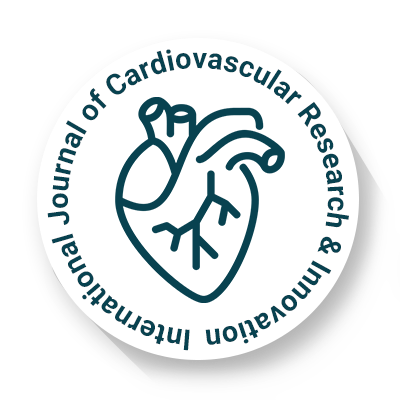
International Journal of Cardiovascular Research & Innovation
OPEN ACCESS

OPEN ACCESS
Cardiac electrophysiology is a subspecialty of cardiovascular science that is concerned with the electrical event that is concerned with the electrical event that controls cardiac function. The coordinated contraction of the heart depends on a highly organized system of ion channels, conduction pathways, and cell-to-cell interactions, which all control that each beat is performed with great accuracy. Disruption of this highly organized system may result in arrhythmias, heart block, or sudden cardiac death; thus, the field of cardiac electrophysiology is important in understanding and controlling electrical disturbances of the heart.
The core of cardiac electrophysiology is the sinoatrial (SA) node, which is commonly termed the “natural pacemaker” of the heart. This small group of cells produces electrical impulses that propagate through specialized conduction fibers to enable coordinated atrial and ventricular contractions. The atrioventricular (AV) node performs an important role as a relay station, slowing the transmission of signals to prevent arrhythmias or excessive heart rhythms. When these conduction pathways are deranged, they may occur in the form of tachycardia, bradycardia, or fibrillation – states that require accurate diagnostic tools and precisely targeted therapy.
Technological advances in electrophysiological mapping have revolutionized the art of arrhythmia management. High-density imaging, electroanatomic mapping, and intracardiac recording are some of the methods that offer unprecedented understanding of the electrical physiology of the heart, making it possible to detect abnormal circuits responsible for life-threatening arrhythmias. Catheter-based ablation methods, allow clinicians to target and eliminate arrhythmogenic sites selectively without damaging normal arrhythmogenic sites selectively without damaging normal conduction tissue. The intersection of cardiac electrophysiology with emerging biomedical technologies is vastly reshaping the future of cardiovascular medicine. Advances such as leadless pacemakers, bioengineered conduction tissue, and artificial intelligence-driven arrhythmia prediction systems are expanding the horizons of heart rhythm management. Wearable cardiac monitors and implantable loop recorders are also solidifying early detection capabilities, enabling real-time monitoring, and optimizing patient-specific therapy.
Understating the pathophysiology of ion channel dysfunction in the genetic arrhythmia syndromes of long QT syndrome and Brugada syndrome is a core element of modern cardiac electrophysiology. Mutations in sodium, potassium, and calcium channels predispose to potentially lethal arrhythmias, and precision medicine-based risk stratification and tailored therapy are thus required. Pharmacological modulation of ionic currents, gene therapy, and stem cell-derived regenerative therapies are promising for the treatment of hitherto intractable electrophysiological diseases.
Besides its clinical uses, the science of cardiac electrophysiology also includes sports cardiology, age-related cardiac dysfunction, and neurocardiology, thus studying the intricate interaction between cardiac function and the autonomic nervous system. The impact of lifestyle, psychological stress, and environmental factors on cardiac electrical activity remains a major area of investigation, highlighting the need for a multidisciplinary approach to the treatment of heart rhythm disorders.
International Journal of Cardiovascular Research & Innovation is committed to advancing innovative research in cardiac electrophysiology. By bridging basic discovery to their clinical applications, our journal is a platform for innovative contributions to the art and science of heart rhythm. As science advances, we are committed to promoting new knowledge, technological innovation, and innovative treatments for improving cardiovascular health around the world.